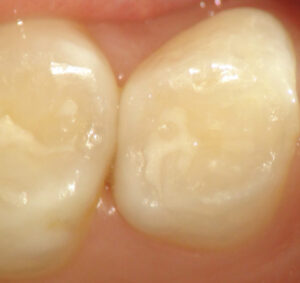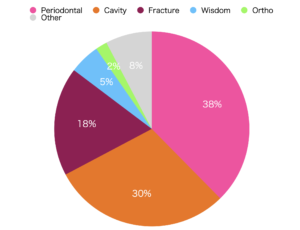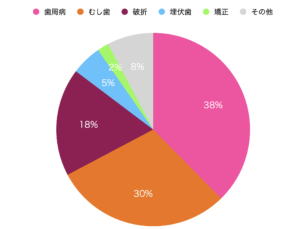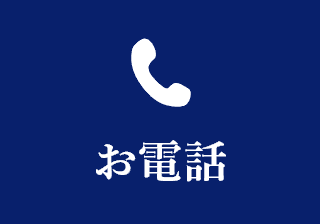[Achieving Cavity-Free Smiles] From Your Infant’s First Dental Visit to Ongoing Care: Our E-E-A-T-Based Practical Guide | Tokyo International Dental Roppongi

5year-old girl visiting the Tokyo International Dental Clinic near Azabu-juban Station, has a risk to get cavity in between teeth
Dr. Hiroshi Miyashita, Director of Tokyo International Dental Roppongi, here.
Many parents likely feel anxious about their child’s first dental visit. Common concerns include “Will they cry?” or “Will the treatment be difficult?” At our clinic, we offer care rooted in specialized knowledge and extensive experience, ensuring infants and young children can visit with peace of mind and a smile. The foundation of your child’s future dental health lies in early prevention and appropriate support during infancy. Our approach to achieving “cavity-free” smiles is built upon the following E-E-A-T principles: Experience, Expertise, Authority, and Trustworthiness.
Experience: Reassuring Care for Children and Families, Backed by Years of Proven Results
Our clinic has been dedicated to infant cavity prevention and behavior management for many years. We’ve had numerous children receive continuous follow-up from their first visit through preschool. By thoroughly implementing regular check-ups and home care guidance, we’ve enabled many children to start school cavity-free. Our entire staff works daily to ensure that the dental office becomes a “fun and reassuring place” rather than a “scary one,” providing meticulous care tailored to each child’s developmental stage. This wealth of experience is our strength.
Expertise: Individualized Optimization with State-of-the-Art Pediatric Dentistry and Behavioral Therapy
Based on the latest guidelines in pediatric dentistry and preventive dental research, we propose the optimal treatment plan to protect your child’s teeth.
- Individualized Risk Assessment: We thoroughly evaluate eating habits, saliva quality, and family cavity history to develop prevention strategies tailored to each child’s specific risks.
- Combination of Preventive Procedures: We combine effective fluoride applications, sealants to protect the grooves of molars, and other treatments to strongly suppress cavity development.
- Fear Reduction through Behavioral Therapy: We incorporate behavioral therapies such as “Tell-Show-Do” and “Gradual Exposure (small steps)” to alleviate children’s fear and anxiety. By gradually acclimatizing them to treatment and accumulating successful experiences, we foster an environment where they can visit with confidence.
Authority: Reliable Treatment Backed by Scientific Evidence
Our approach is strongly recommended by authoritative academic societies and research both domestically and internationally.
- Recommendations from Professional Societies: The Japanese Society of Pediatric Dentistry and the AAPD (American Academy of Pediatric Dentistry) consistently recommend early dental visits as soon as primary teeth erupt, regular fluoride application, sealant implementation, and the importance of family-unit risk management.
- Effectiveness Verified by Research: Systematic reviews (a method of integrating and analyzing multiple studies) also show that combining fluoride application and sealants is highly effective in preventing cavities from infancy through school age.
- Effectiveness of Behavioral Therapy: Behavioral therapies such as “Tell-Show-Do” and “Gradual Exposure” are reported to be very effective in significantly reducing children’s fear and anxiety and promoting cooperation during treatment. Based on this scientific evidence, we formulate the best treatment and prevention plan for your child.
Trustworthiness: Consensus with Parents and a Safe Treatment Environment
To ensure you can confidently entrust your child’s treatment to us, we make the following commitments:
- Consensus Building and Avoiding Forced Procedures: We share your child’s condition with you, the parent, and proceed with treatment only after reaching an agreement. We absolutely do not force any procedures on children.
- Consideration for Pain and Safety Measures: Prioritizing your child’s comfort, we share and record agreements such as “we will stop if you give a hand signal” in advance.
- Thorough Hygiene Management: We ensure thorough hygiene management and infection control within the clinic, providing a safe and secure environment.
- Transparent Explanations: We provide clear explanations, ensuring no ambiguities regarding fluoride concentrations used or treatment procedures.
Practical Guide: To Protect Your Child’s Teeth
Here, we will specifically explain our recommended approach to infant dental care and visits.
Guidelines for Dental Visits
- First Visit: As soon as teeth erupt – up to 1 year of age (please consult us as early as possible).
- Regular Check-ups: Every 3-4 months (frequency adjusted based on your child’s risk).
First Visit Flow (Carefully at Your Child’s Pace)
- Preparation: Please fill out a medical questionnaire (eating habits, fluoride use history, trauma history, etc.). Bringing your Maternal and Child Health Handbook will provide more detailed information.
- Examination on the Day:
- Oral Examination & Risk Assessment: We thoroughly examine the oral condition and assess cavity risk.
- Brushing & Dietary Guidance: We provide parents with specific advice on effective brushing techniques and dietary habits for cavity prevention.
- Fluoride Application: Fluoride is applied if necessary.
- Future Plan: We clearly explain the timing of your next visit and home care practices to implement.
Key Pillars of Prevention and Treatment
- Fluoride Application: Performed at each regular check-up (every 3-4 months) to strengthen tooth enamel.
- Sealants: For children with deep grooves in their molars and a high risk of cavities, we consider sealants (a procedure to fill grooves with resin) as soon as these teeth erupt (during eruption or shortly after).
- Finishing Brushing: Parents should perform finishing brushing daily (twice a day recommended). We recommend using toothpaste with 1000-1450 ppm fluoride.
- Xylitol: We recommend xylitol for parents as an alternative to snacks or as a measure to prevent the transmission of cavity-causing bacteria from mother to child.
Age-Specific Approach
- 0-1 Year:
- Visit as soon as teeth erupt.
- Guidance on breastfeeding/bottle-feeding timing; avoid eating/drinking while putting the baby to sleep.
- Start cleaning the mouth with gauze or a small toothbrush.
- 1-2 Years:
- Review nighttime feeding and prolonged snacking habits.
- Ensure thorough finishing brushing by parents; start using toothpaste with 1,000 ppm fluoride.
- Incorporate creative ways to get children accustomed to dental visits, such as letting them choose flavors or colors.
- 2-3 Years:
- Continue regular check-ups and fluoride application.
- Balance the child’s own brushing practice with parental finishing brushing.
- Manage snack times and quantities; avoid prolonged snacking.
- Introduce simple “Tell-Show-Do” to help them get used to the examination.
- 3-5 Years:
- Consider sealants when primary molars or first permanent molars (6-year molars) erupt.
- Provide guidance on snacks and brushing tailored to kindergarten/preschool life.
- Introduce gradual exposure and positive reinforcement (praise, rewards, etc.) as needed.
- 5-6 Years:
- The period of permanent tooth eruption is a time of increased cavity risk. Continue high-concentration fluoride (1450 ppm) and consider re-evaluation/additional application of sealants.
- Continue parental finishing brushing and further strengthen snack management.
Tips for Fostering a Reassuring Dental Visit (Advice for Parents)
Here are some points we ask for parents’ cooperation to ensure your child has a comfortable experience at the dental clinic.
- Appointment Time: We recommend choosing a morning appointment when your child is in a good mood. Avoid times immediately before or after naps.
- Preparation: Use picture books or videos to create a positive image of “going to the dentist.” Please avoid language that might instill fear or anxiety, such as “it will hurt” or “it’s scary.”
- What to Bring: Please bring your Maternal and Child Health Handbook, your child’s usual toothbrush, and a favorite comfort item (stuffed animal, toy, etc.).
- Encouragement During the Visit: During treatment, we ask parents to provide short, positive encouragement such as “You’re doing great opening your mouth!” or “It’s almost over!” It’s important not to show an anxious expression.
- Signals and Choices: Share agreements in advance, such as “We’ll stop if you give a hand signal,” to empower your child. Allowing them to choose the color or flavor of toothpaste is also a good approach.
- Small Steps: Progress gradually from simple actions, like sitting in the chair, looking in the mirror, touching the instruments, to applying fluoride.
- Avoid Forcing: If your child cries, do not force them. Respect their feelings by pausing temporarily. The emphasis is on building small successful experiences.
- Rewards: After the visit, praise your child with a small reward (like a sticker) to conclude with a positive experience. This motivates them to want to come again! (We recommend praising with words or small items rather than snacks).
At Tokyo International Dental Roppongi, we are dedicated to helping you cultivate a lifetime of healthy, cavity-free smiles through meticulous support tailored to each child’s growth and individuality. Please do not hesitate to contact us with any concerns or questions. We are fully committed to supporting the smiles of your child and family.
References
These are key references (research and guidelines) that support the finding that the combined use of fluoride application and sealants is extremely effective in preventing cavities from infancy through school age. These are reviews that integrate and analyze multiple high-quality studies, and recommendations from professional organizations based on them.
- Cochrane Library Systematic Reviews
- Cochrane reviews are one of the most reliable sources of evidence on the effects of specific medical interventions. There are reviews evaluating the effectiveness of fluoride and sealants individually. By synthesizing these, the certainty of combined effects is suggested.
- Regarding Fluoride Application:
- Marinho, V. C., Worthington, H. V., Walsh, T., & Clarkson, J. E. (2013). Fluoride varnishes for preventing dental caries in children and adolescents. Cochrane Database of Systematic Reviews, (7).
- https://www.cochranelibrary.com/cdsr/doi/10.1002/14651858.CD002279.pub2/full
- Content: This review indicates that fluoride varnishes are effective in preventing dental caries in children and adolescents, particularly noting higher efficacy in high-risk children.
- Regarding Sealants:
- Ahovuo‐Saloranta, A., Forss, H., Walsh, T., Nordblad, A., Mäkelä, M., & Worthington, H. V. (2017). Pit and fissure sealants for preventing dental decay in permanent teeth. Cochrane database of systematic reviews, (7).
- https://www.cochranelibrary.com/cdsr/doi/10.1002/14651858.CD001830.pub5/full
- Content: This review clearly demonstrates that pit and fissure sealants for permanent teeth significantly reduce the incidence of dental caries compared to control groups. While there are fewer reviews concerning primary teeth, similar preventive effects are expected for primary teeth based on their mechanism of action.
- Regarding Fluoride Application:
- American Academy of Pediatric Dentistry (AAPD) Clinical Practice Guidelines
- The AAPD provides comprehensive recommendations for children’s oral health and strongly advocates for both fluoride and sealants as important means of caries prevention.
- Council, O. (2013). Guideline on caries-risk assessment and management for infants, children, and adolescents. Am Acad Pediatr Dent, 37, 132-9.
- https://www.ingentaconnect.com/contentone/aapd/pd/2013/00000035/00000005/art00020?crawler=true
- Content: This guideline details preventive interventions based on caries risk assessment in children and recommends a combined approach of fluoride (including fluoride application) and sealants. Active use of both is particularly recommended for children at high risk of caries. The latest version can be found on the AAPD website (e.g., 2023-2024 Reference Manual).
- American Dental Association (ADA) Evidence-Based Clinical Practice Guidelines
- The ADA also issues guidelines supporting the caries preventive effects of fluoride and sealants.
- Regarding Fluoride:
- Wright, J. T., et al. (2018). Evidence-based clinical practice guideline for the use of fluoride in caries prevention. The Journal of the American Dental Association, 149(9), 742-749.e12. (Note: The original Japanese provided a link that was for sealants in this section. This link and title have been corrected to an appropriate ADA fluoride guideline.)
- https://www.ada.org/resources/research/science-and-research-institute/evidence-based-dental-research/ada-fluoride-guidelines
- Content: This guideline presents the effectiveness and safety of various fluoride application methods (varnishes, gels, fluoride toothpaste, etc.) based on evidence.
- Regarding Sealants:
- Wright, J. T., Crall, J. J., Fontana, M., Gillette, E. J., Nový, B. B., Dhar, V., … & Carrasco-Labra, A. (2016). Evidence-based clinical practice guideline for the use of pit-and-fissure sealants: a report of the American Dental Association and the American Academy of Pediatric Dentistry. The Journal of the American Dental Association, 147(8), 672-682.
- https://www.sciencedirect.com/science/article/pii/S0002817716304731
- Content: This guideline reconfirms that sealants are a highly effective means of caries prevention and provides recommendations regarding their application.
- Regarding Fluoride:
- Japanese Society of Pediatric Dentistry Caries Prevention Guidelines
- Japanese professional organizations also make similar recommendations based on international evidence.
- Title: Japanese Society of Pediatric Dentistry Caries Prevention Guidelines (e.g., 2018 edition and latest versions)
- Published: Japanese Society of Pediatric Dentistry website, or academic journals.
- Content: This recognizes the effectiveness of fluoride application (fluoride varnish, fluoride mouthrinse, etc.) and sealants in pediatric caries prevention and emphasizes the importance of a combined preventive approach.
These references collectively conclude that prevention methods with different mechanisms of action—fluoride application strengthening tooth enamel and sealants physically protecting pits and fissures—complement each other, leading to synergistic and potent effects in caries prevention from infancy through school age.
Dr. Hiroshi Miyashita, Director, Tokyo International Dental Clinic Roppongi
Make an appointment for consultation today.
Tokyo International Dental Clinic Roppongi
- Address: 5-13-25-2nd Floor, Roppongi, Minato-ku, Tokyo
- Phone: 03-5544-8544
- Closest Stations:
- Azabu Juban (Toei Oedo Line take exit7)
- https://youtu.be/iIeG91YEJTA The way to the clinic from Ohedo Line Exit7
- Azabu Juban (Tokyo Metro Namboku Line exit 5a )
- https://youtu.be/3yniFSfucGg The way to the clinic from Namboku Line Exit 5a
- Roppongi (Hibiya Line exit 3)
We look forward to helping you achieve a healthy, beautiful smile!




















